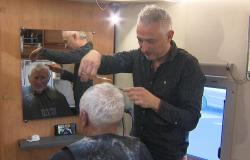
During high tides from Friday 15 to Monday 18 November 2024, the fishermen on foot rushed to the beaches in search of shellfish and crustaceans. The practice is, however, regulated and monitored by maritime affairs, notably now using drones.


At each high tide, the Morbihan seaside attracts fishing enthusiasts on foot. The activity is popular with vacationers and locals alike. They go in search of cockles, periwinkles, and clams. Damgan is a major fishing spot in Morbihan. He sees thousands of fishermen coming from all over the West, Vendée, Loire-Atlantique and even Mayenne, to stock up on oysters, scallops and curry combs.




It's also an opportunity to get a breath of fresh air, clear your mind and enjoy some friendly time with your family.
However rules exist regarding shore fishing to maintain the ecological quality of the environment. Unfortunately, these rules are still too often flouted! The sizes of shellfish and crustaceans as well as the quantities authorized to be taken are regulated, for example: cockles measuring less than three centimeters and mussels and clams measuring less than four centimeters must be left on site, knowing that a clam has need two and a half years to develop. As for the clam, it takes seven years to reach the size of 4.3 cm! If they are collected too small, they do not have time to reproduce and their quantity decreases.
The rules that apply to recreational fishing, which concern minimum sizes, also involve the tools authorized to protect coastal areas and preserve maritime biodiversity: a clam knife with a handle of 30 cm maximum; a hand grapette, not screened with a handle of 80 cm maximum and a three-pronged fork 7 mm wide and 10 cm maximum; a toothless serfouette; a spade fork and a shellfish fork, only for fishing marine worms equipped with five tines at most.




Everything is done to welcome fishermen on foot and remind them that fishing rhymes with pleasure, but also with respect for the coastline. The fisheries and environment police now have a new weapon to enforce the rules: tested in Côtes-d'Armor, particularly in the bay of Saint-Brieuc, the drome is now used in Morbihan and will soon be in Finistère.
Christophe Mannier is head of theCoastal Unit of Maritime Affairs (Ulam) of Morbihan. Intended for missions on land, the drone is now used at sea. It has a thermal camera, and if necessary it can give instructions with a loudspeaker. This new technology, thanks to its rapid deployment in the areas to be monitored, is an asset for improving knowledge of fishing activities, especially since it can intervene in places that are very difficult to access; it thus prevents agents from going down along the rock at the risk of falling! With the drome, nothing escapes the agents; it can quickly identify fishermen who have containers that are way too big and are likely to collect way too many shellfish.
In the event of an infraction, the amount of the fine will range from 50 to 100 euros.




Fishing drones can also intervene to help with research in the context of a worrying disappearance in the maritime environment






